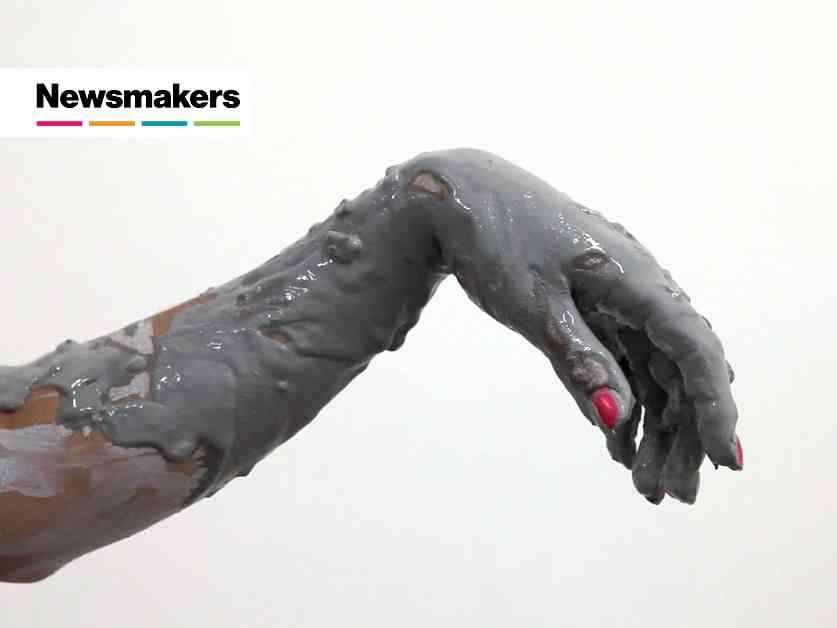Young Joon Kwak’s exhibition, “RESISTERHOOD,” at the Leslie-Lohman Museum of Art in New York invites audiences to join a movement of resistance through art. Featuring a collection of work spanning a decade, including new commissions, the exhibition opens with striking neon pieces displayed in the museum’s window spaces. These neon works, showcasing hands in various gestures and text configurations, set the stage for what lies within the museum walls.
Inside, visitors are met with a stunning array of bejeweled sculptures that reflect light and captivate the eye. While these sculptures exude beauty and glamour, they also carry a deeper meaning. Embedded within the sculptures are casts of parts of Young Joon Kwak’s body, including a pensive facial expression, body prints, and videos that explore different facets of the artist’s queer trans identity. At a time when trans rights are under threat, “RESISTERHOOD” stands as a powerful act of resistance, blending formal artistry with political commentary.
To gain insights into the exhibition, ARTnews had the opportunity to speak with Young Joon Kwak, the Los Angeles-based artist behind the show. In a candid conversation, Kwak shared their approach to creating the exhibition and the significance of showcasing their work at the Leslie Lohman Museum, a space dedicated to queer art history and representation.
Exploring Chameleon Bodies and Camouflage
Kwak’s bejeweled sculptures, showcased in both this exhibition and the Made in L.A. biennial, form a series of what the artist calls “chameleon” works. Inspired by the concept of camouflage and survival strategies for marginalized communities, these sculptures aim to provoke a different response to transness. By incorporating iridescent elements that draw viewers closer and abstract patterns that invite engagement, Kwak challenges perceptions and invites viewers to contemplate the complexities of trans identity.
The artist’s exploration of chameleon bodies extends to body prints inspired by David Hammons’s iconic work. By using body casts as rubber stamps, Kwak creates prints that are faithful to the original body while allowing for interpretation and projection. This open-ended approach to representation encourages viewers to see themselves reflected in the work, fostering a sense of connection and inclusivity.
The Power of “Resisterhood” and Collective Connection
The title of the exhibition, “Resisterhood,” reflects Kwak’s commitment to resistance and collectivity. By blending the words “resist” and “sisterhood,” the artist celebrates the power of resistance and community support. Through their work, Kwak aims to create a space where queer and trans individuals feel seen, affirmed, and empowered. In a time marked by erasure and division, “RESISTERHOOD” stands as a beacon of hope and resilience.
Kwak’s practice extends beyond traditional sculpture, encompassing performance art and music with projects like Mutant Salon and Xina Xurner. While these mediums offer different opportunities for engagement, they all contribute to Kwak’s larger mission of fostering connection and understanding. By creating spaces that invite audiences to imagine themselves in the work, Kwak seeks to break down barriers and challenge preconceived notions of identity and representation.
In the face of uncertainty and fear, Kwak’s art serves as a reminder of the transformative power of community, resilience, and collective care. “RESISTERHOOD” is more than an exhibition—it is a call to action, a celebration of diversity, and a testament to the enduring spirit of queer and trans individuals. As viewers engage with the work, they are invited to reflect, connect, and embrace the multiplicity of queerness and transness that defines our shared human experience.












